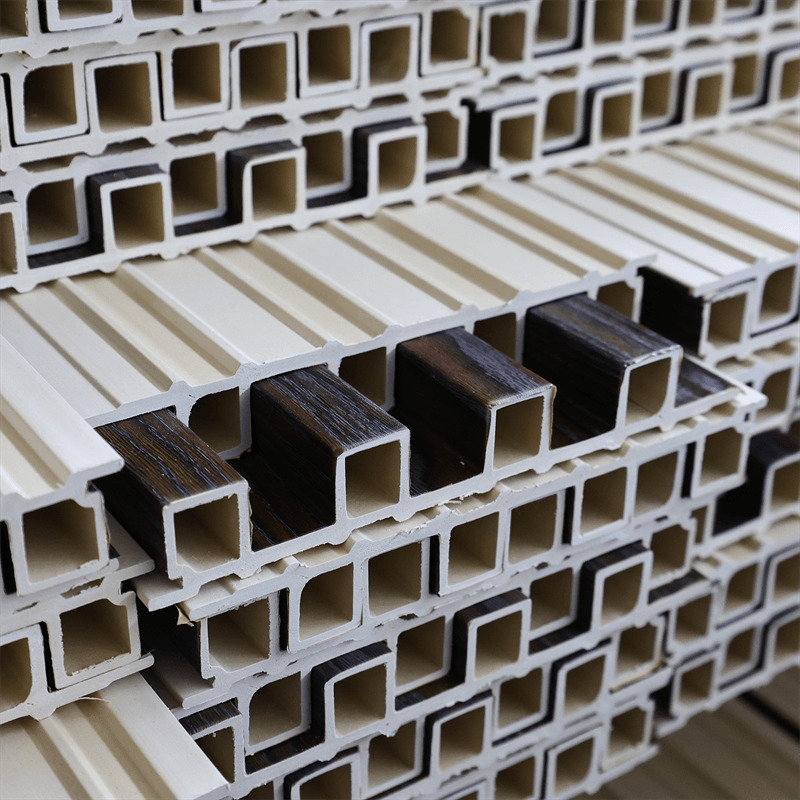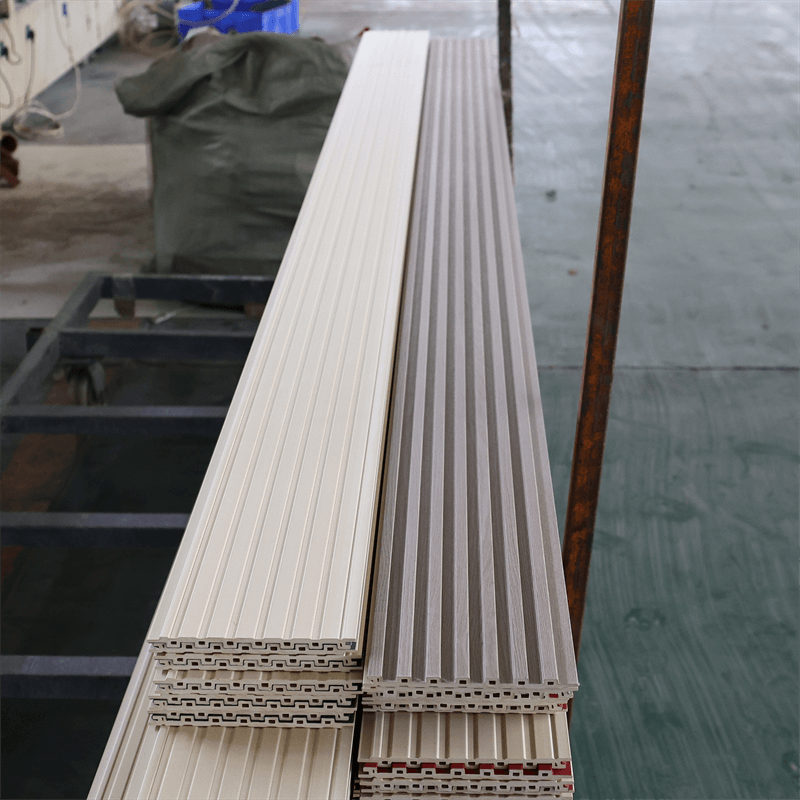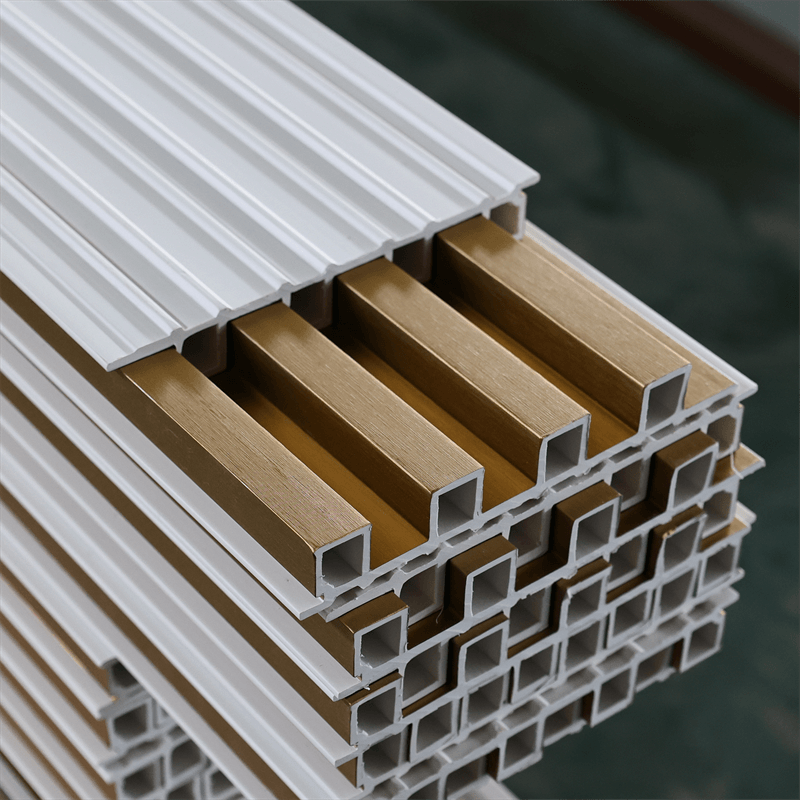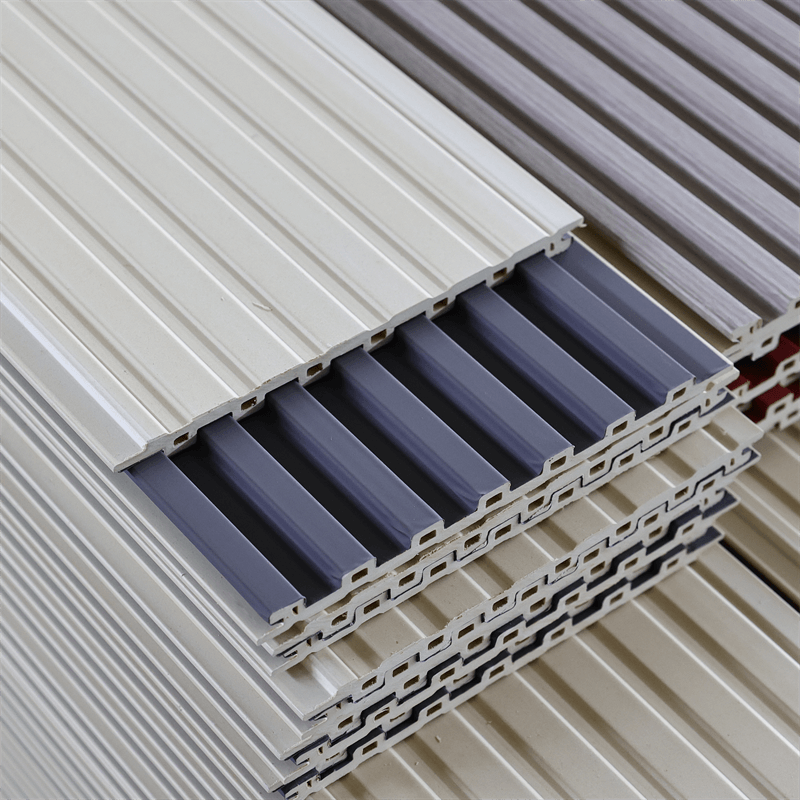In the world of interior and exterior design, wall cladding plays a crucial role in enhancing the aesthetics and functionality of a space.
Traditional wall cladding materials, such as wood, brick, and stone, have long been used to create visually appealing surfaces.
However, with the advent of technology and sustainable materials, a new player has emerged in the market – WPC (Wood-Plastic Composite) wall panels.
This essay explores how WPC wall panels are redefining traditional wall cladding methods, revolutionizing the construction industry, offering sustainable solutions, and providing design versatility.

I. Revolutionizing the Construction Industry:
WPC wall panels have gained immense popularity in the construction industry due to their unique characteristics and benefits.
Unlike traditional materials, WPC is a composite material made from a combination of wood fibers and plastic polymers, offering improved strength, durability, and resistance to environmental factors.
This revolutionary material has transformed the way wall cladding is approached in construction projects.
A. Enhanced Durability:
One of the significant advantages of WPC wall panels is their exceptional durability.
The combination of wood fibers and plastic polymers creates a material that is resistant to rot, decay, and insect infestation.
This durability ensures that the wall panels maintain their integrity over time, reducing the need for frequent replacements and repairs.
WPC wall panels are engineered using a combination of wood fibers and recycled plastics.
This unique composition offers exceptional durability and longevity, making them an ideal choice for both interior and exterior applications.
Unlike traditional cladding materials such as wood or metal, WPC panels are highly resistant to rot, decay, and insect damage.
They do not warp, crack, or splinter over time, ensuring the longevity and structural integrity of the building envelope.
This durability translates into cost savings for building owners as it reduces the need for frequent maintenance, repairs, and replacements.
B. Moisture and Weather Resistance:
Traditional wall cladding materials are often susceptible to moisture damage, especially in areas with high humidity or extreme weather conditions.
In contrast, WPC wall panels are engineered to be highly resistant to moisture, making them an ideal choice for both interior and exterior applications.
The water-resistant properties of WPC help prevent warping, cracking, and rotting, ensuring the longevity of the cladding and minimizing maintenance requirements.
II. Sustainable Solutions:
In an era where sustainability is a top priority, WPC wall panels offer a compelling alternative to traditional wall cladding methods.
These panels are environmentally friendly and contribute to a greener future.
A. Use of Recycled Materials:
WPC wall panels are often made from a combination of recycled wood fibers and plastic polymers.
By utilizing these recycled materials, WPC helps reduce the demand for virgin resources and minimizes waste.
This eco-friendly approach contributes to the conservation of natural resources and reduces the carbon footprint associated with construction projects.
B. Reduced Environmental Impact:
Compared to traditional wall cladding materials, the production of WPC wall panels generates fewer greenhouse gas emissions and consumes less energy.
The manufacturing process of WPC involves a lower carbon footprint, making it a sustainable choice for environmentally conscious builders and designers.
Additionally, the durability of WPC wall panels ensures a longer lifespan, further reducing the environmental impact by reducing the need for replacement.
III. Design Versatility:
WPC wall panels offer a wide range of design options, allowing architects and designers to unleash their creativity and achieve unique aesthetics in various applications.
A. Wide Array of Colors and Finishes:
WPC wall panels are available in a vast array of colors, finishes, and textures, allowing for customization and the creation of visually striking designs.
Whether mimicking the appearance of natural wood, stone, or incorporating contemporary patterns, WPC offers versatility and flexibility to meet diverse design preferences.
B. Seamless Integration with Other Materials:
WPC wall panels can seamlessly integrate with other materials, such as glass, metal, or traditional cladding materials, to create visually appealing and harmonious combinations.
This versatility enables designers to achieve a desired aesthetic while leveraging the benefits of WPC, creating unique and captivating spaces.
WPC wall panels offer a wide range of design options, allowing architects and designers to unleash their creativity and achieve unique visual effects.
These panels are available in various colors, textures, and finishes, mimicking the appearance of natural wood or other materials.
This versatility enables the integration of WPC panels into diverse architectural styles and building designs.
Furthermore, WPC panels can be customized to meet specific design requirements, including curved surfaces or complex geometries.
This adaptability in design allows for endless possibilities, enabling the creation of visually striking and aesthetically pleasing facades.
Beyond aesthetics, WPC wall panels also offer functional benefits. They provide excellent insulation properties, improving energy efficiency and reducing heating and cooling costs.
Additionally, these panels can be engineered with acoustic features, minimizing noise transmission and enhancing the comfort of interior spaces.
The combination of design versatility and functional enhancements makes WPC panels an attractive choice for both residential and commercial projects.
IV.Easy Installation: Time and Cost Efficiency
Traditional wall cladding methods often involve complex installation processes, requiring skilled labor and specialized tools.
In contrast, WPC wall panels offer a user-friendly installation system that is quick, efficient, and cost-effective.
The panels are lightweight, making them easier to handle and transport. They are designed with interlocking mechanisms or hidden fasteners, eliminating the need for visible screws or nails.
This streamlined installation process reduces labor costs, construction time, and potential errors.
Additionally, WPC panels can be installed directly onto existing surfaces, eliminating the need for extensive preparation or demolition work.
WPC wall panels have undoubtedly redefined traditional wall cladding methods by offering enhanced durability, moisture resistance, and weather resistance.
Moreover, their sustainable nature and reduced environmental impact contribute to a greener construction industry.
With their design versatility, WPC wall panels empower architects and designers to explore new creative possibilities and achieve stunning aesthetics.
As the construction industry continues to evolve, WPC wall panels have emerged as a game-changer, paving the way for a more sustainable, durable, and visually appealing future in wall cladding.
WPC wall panels represent a significant advancement in the field of wall cladding, redefining traditional methods and offering numerous benefits to the construction industry.
With their exceptional durability, sustainability, design versatility, and easy installation, these panels are revolutionizing the way buildings are clad.
As architects and builders continue to prioritize longevity, environmental sustainability, aesthetic appeal, and cost efficiency, the adoption of WPC wall panels is expected to increase.
By embracing this innovative solution, we can create structures that not only stand the test of time but also contribute to a more sustainable and visually appealing built environment.



